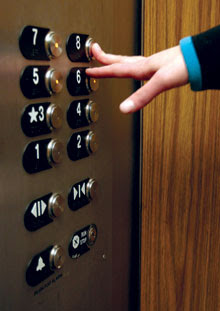
The elevator can be a gold mine of social behavior. Sometimes you walk in to see the button of your floor already lit. Did you interact with the other person with a smile or a head nod? You could break the silence to talk about the weather until the ride ended. Perhaps the stranger is standing next to the floor buttons so you said, “excuse me, uh, could you press 3 please…thanks.” Or maybe you just kept quiet, avoided eye contact and checked the time. Just within that small space in a short amount of time, there is such a wide range of possible social interaction that could have occurred.
Behavioral biologist Dario Maestripieri conducted an experiment to find the source of some of these human behaviors using our nonhuman primate ancestors. His subject of study was the Rhesus macaque (pronounced muh-kak, -kahk), an Old World monkey that shared a common ancestry with humans 25 million years ago. Rhesus macaques have a rather great tendency for fighting. If placed within a restricted space, aggression can be more easily triggered amongst these animals especially because the option to flee has been eliminated in the event of an attack. Therefore, it was reasonable for Maestripieri to expect monkey blood and fur to fly out from the cage.
But interestingly enough, the two monkeys did their best to avoid an altercation.
Sometimes the monkeys sat motionless in the corner and avoided sudden movements. Other times, the monkeys stared into the air or towards the ground to avoid eye contact. Some monkeys went so far as to extend communication (baring their teeth) in order to suggest grooming and diffuse the possibility of fighting. These behaviors sound pretty familiar. It turns out that both humans and macaques when placed in a space with an unfamiliar member of its own species will work towards the same evolutionarily advantageous goal: reduce stress or cooperate in order to survive.
Source: Games Primates Play by Dario Maestripieri